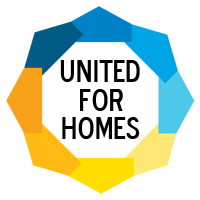The UFH Proposal in Action
Apr 24, 2017
 What are the impacts for the nation and for each state of the United for Homes (UFH) proposal to make modest reforms to the mortgage interest deduction and to invest the savings into affordable housing? And how would UFH solutions affect children and families, the economy and job creation, and income and racial inequality? The “Impact” section of the new UFH website provides answers.
What are the impacts for the nation and for each state of the United for Homes (UFH) proposal to make modest reforms to the mortgage interest deduction and to invest the savings into affordable housing? And how would UFH solutions affect children and families, the economy and job creation, and income and racial inequality? The “Impact” section of the new UFH website provides answers.
The website provides a slider that illustrates the savings and benefits nationally of lowering the mortgage cap from $1 million to $500,000 and converting the MID from a deduction to a 15% tax credit. When both reforms are applied, $241 billion is saved over ten years that can be invested to create 2.4 million new affordable homes or provide 3.3 million additional households with rental assistance. And converting the MID to a tax credit would provide 15 million lower income homeowners with a tax benefit that they are not currently receiving.
An interactive “Get the Facts on Your State” map allows users to see how the UFH proposals would benefit their states, as well as other key data on affordable housing in their states. For example:
- California: The UFH proposal would generate $42 billion over 10 years that could provide 458,304 additional households rental assistance or build 427,302 new affordable housing units through programs like the national Housing Trust Fund.
- Texas: $13 billion generated, providing 222,613 households rental assistance or building 131,550 new affordable housing units.
- Ohio: $7 billion generated, providing 139,437 households rental assistance or building 70,724 new affordable housing units.
- Massachusetts: $11 billion generated, providing 123,623 households rental assistance or building 117,123 new affordable housing units.
The state pages also provide the percentage of mortgages over $500,000 in each state, UFH advocacy resources, each state’s organizational endorsers of the campaign, and ways to take action on behalf of the campaign, as well as many other data and resources.
Finally, a “Stakeholders” section of the website describes how the UFH solutions to homelessness and housing poverty would impact “Children and Families,” “Economy and Job Creation,” and “Income and Racial Inequality.” The section explains how new affordable housing investments made possible by MID reform would help children, families, and communities thrive long-term; bolster economic growth and job creation; close the income gap between rich and poor; and promote racial equality.
Visit the UFH website at: http://www.unitedforhomes.org/